An interview with Connor from the Real World Johto Kansai Tour
A Pokémon fan called Connor tells us all about his incredible trip to the real-world locations which inspired the Johto region of Pokémon Gold & Silver. Plus an update on the very latest Pokémon news
Feature: An interview with Connor from the Real World Johto Kansai Tour
Connor is a Pokémon fan with a deep passion for Pokémon Gold & Silver, taking his love for them and translating it into a real-world adventure by visiting the towns, cities, and locations in Japan that inspired places in the games. Connor documented his entire trip in a video on his YouTube channel, but in this interview he tells us about his experiences, highlights of the trip, and his motivation for doing it.
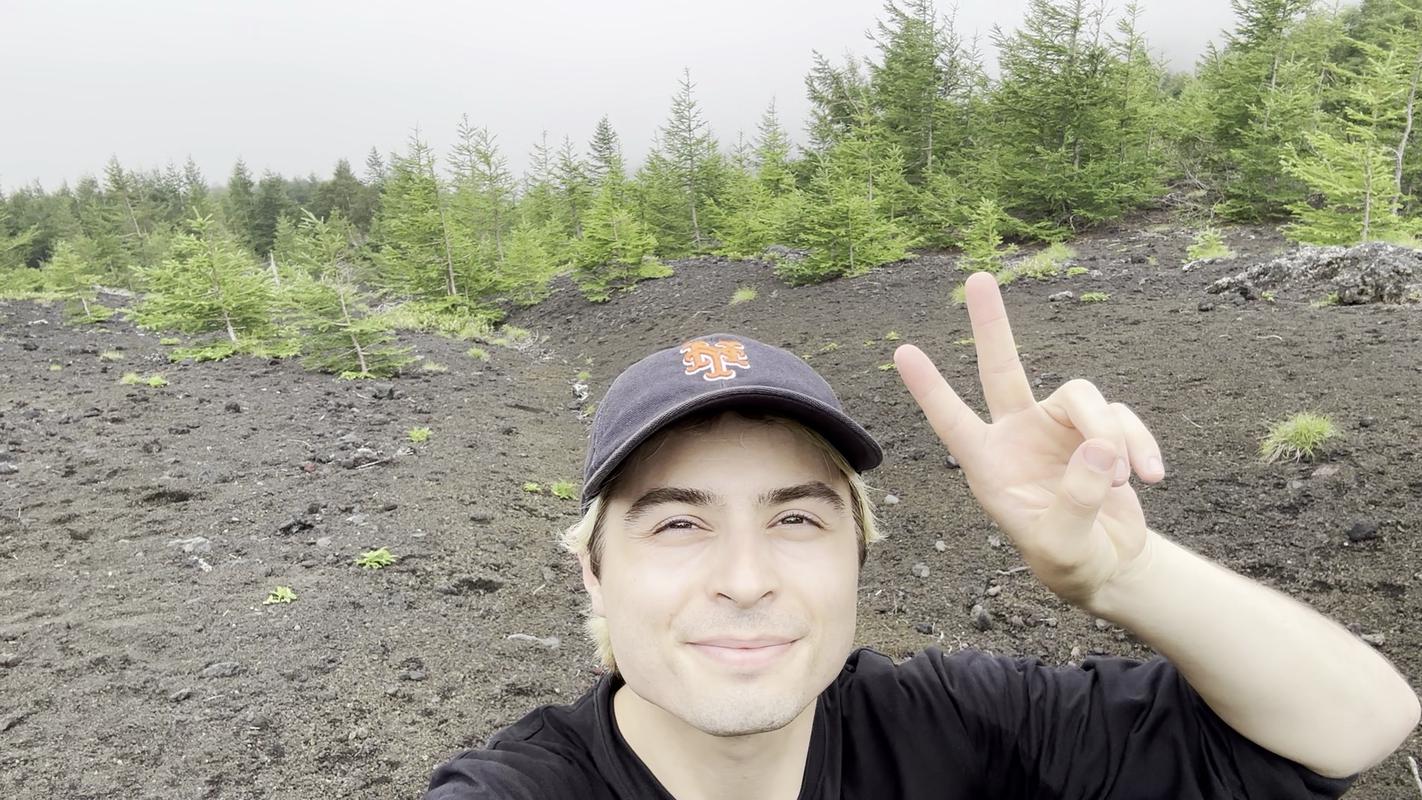 A photograph of Connor on top of Mt. Fuji, the real-life location of Mt. Silver in Johto
A photograph of Connor on top of Mt. Fuji, the real-life location of Mt. Silver in Johto
It is fantastic to be speaking with you about your journey, Connor! Can you please introduce yourself to our readers?
Connor:
Thank you for taking the time to feature me and my work! My name is Connor, known online as RabbitHouse. I started out as a charity streamer in 2020, and quickly found myself organizing events for an up-and-coming South Korean game called Eternal Return. I ended up moving abroad to become one of the English-language tournament casters. It was an incredible experience, but I’m never satisfied staying in one place – the desire to keep exploring took me to my next horizon in Japan.
You began your journey to Japan in March 2024 with the intention of visiting the real-world equivalents of the cities and landmarks of Johto. What encouraged you to take on this challenge?
Connor:
When I finished my year in South Korea, I traveled to Japan for a week before returning to my home in New York. I could only spend one day in Kyoto, and I was upset that I didn’t get the chance to see the golden temple Kinkaku-ji, the real world equivalent of Tin Tower (Bell Tower in HGSS). After a few months of living back in America and applying for jobs I didn’t really want to do, I decided I’d move to Japan, improve my linguistic skills, and climb Mt. Fuji. Living internationally was the coolest thing I had ever done, and I felt that trying it again in Osaka was the only way to surpass that initial experience.
I enjoyed a similar travel video about the Fallout games from Noah Caldwell-Gervais, and thought that Mt. Fuji would be the perfect ending for a Johto-themed project. I wasn’t the first creator to explore Pokémon’s real-world inspirations, but nobody had made a singular, cohesive project about my favorite region. When I encounter a creative idea that has never been done before, it’s like a cheat code to find an incredible amount of motivation within myself.
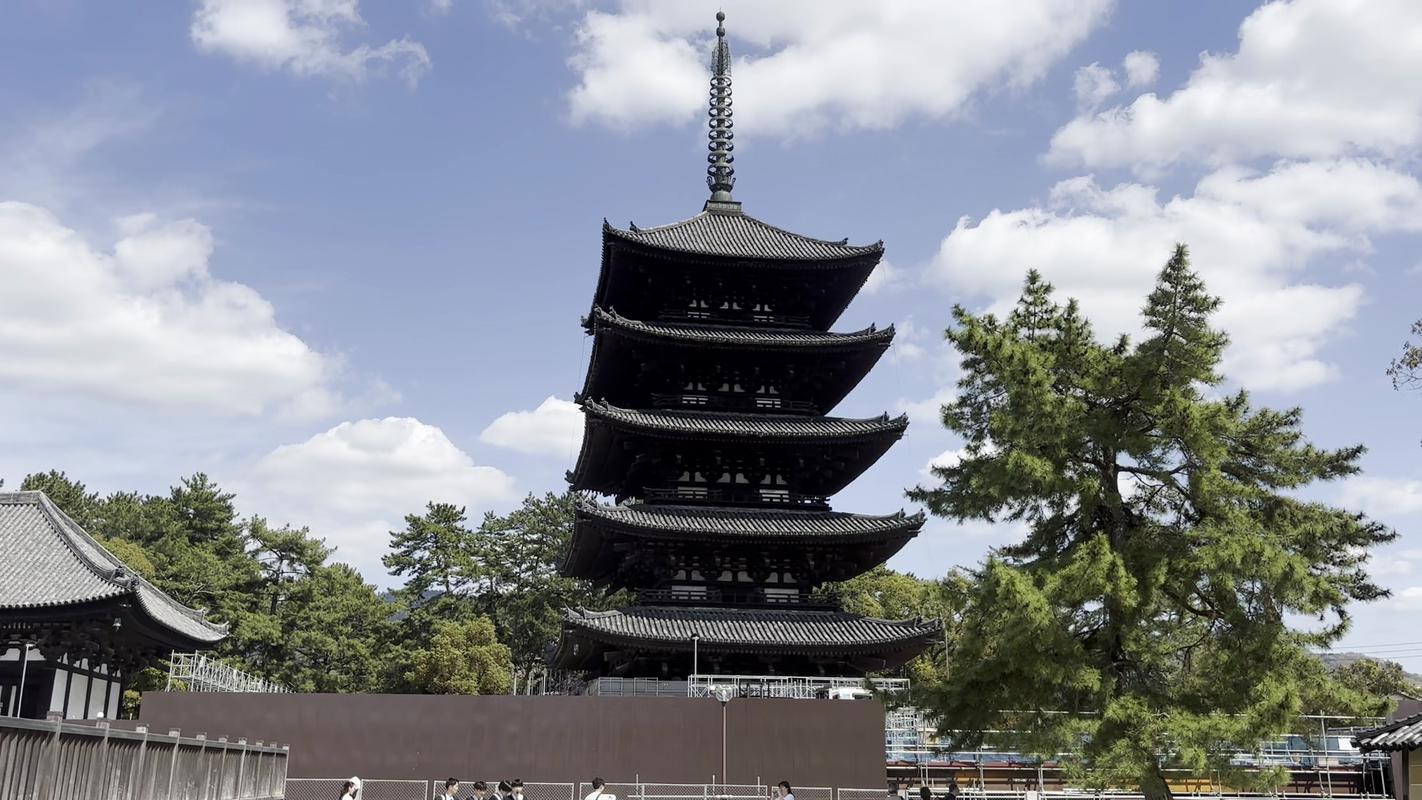 Kōfuku-ji in Nara, the real-world equivalent of Violet City's Sprout Tower
Kōfuku-ji in Nara, the real-world equivalent of Violet City's Sprout Tower
In August 2023, we interviewed Alex from The Grand PokéTour, who had done a similar journey through Japan. How familiar with his journey were you before you began your own?
Connor:
I actually tried to avoid videos similar to what I wanted to make during the traveling and writing process. I didn’t want to spoil myself on any potential surprises, or have someone else’s work influence my creative process. After completing a rough edit of the video, I watched channels like The Grand PokéTour to get a sense of what improvements I could make. Alex creates high-quality work, and his method of covering one location per video facilitates more frequent uploads. I believe it would be difficult to explore my video’s themes of time and nostalgia if these concepts weren’t building on one another throughout the duration of one long-form video.
While some towns and cities are clearly inspired by real-world locations, such as Ecruteak City and Kyoto, some are more ambiguous. With this in mind, how did you decide upon the places you would visit?
Connor:
Bulbapedia made it very easy for me to start, but not everything I did lined up with their list. I chose seventeen key locations from the games – Mt. Mortar and the real-world Mt. Hiei were later cut – then planned out which areas could be explored together in one trip. I included the date on-screen at all times in the video so that the audience can see which locations were visited on the same day, as well as educate themselves on what the weather and natural life would look like if they plan to travel during a similar time of year.
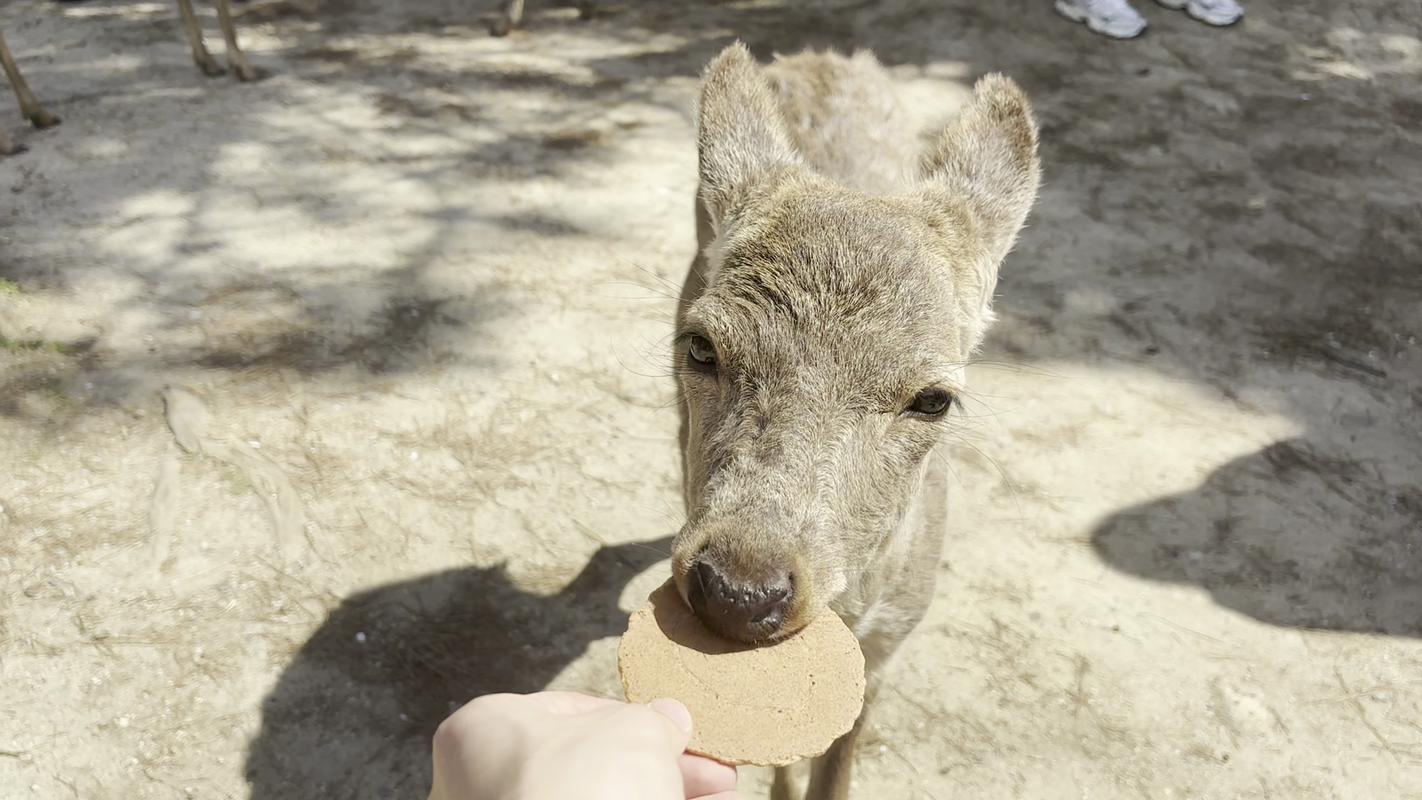 Nara is home to over 1,000 friendly deer, which is why Stantler can be found near Violet City
Nara is home to over 1,000 friendly deer, which is why Stantler can be found near Violet City
One of the things I appreciated about your video was how you shared knowledge and insightful context about the locations you were visiting, which was quite educational! What inspired you to learn about the history of Japan?
Connor:
I cannot imagine my life without the influence of Japanese culture. I was watching Dragon Ball Z, Sailor Moon, and Pokémon before I really understood who I was or where I lived. As I got older and started using the internet, I discovered that the United States was several months behind in my favorite game and anime franchises, and that futuristic image of Japan never left me. In middle school, I started to learn the two basic Japanese alphabets, hiragana and katakana, on my iPod Touch. Years later, I formally studied the language as a university student.
Anime and Japanese games are more socially accepted nowadays compared to when I was a kid; growing up in an environment that hadn’t fully embraced the country’s unique sensibilities made me want to expand my cultural knowledge beyond media. Branching out to food, music, and history made my love of Japan “respectable”, in my own mind.
I internalized this type of thinking from a young age, and it pushed me to wholeheartedly pursue my interest in the country. I used to be a kid who knew very little about Japan; now I’ve lived there and can speak the language. It’s easier to be confident when you feel like you’ve earned it.
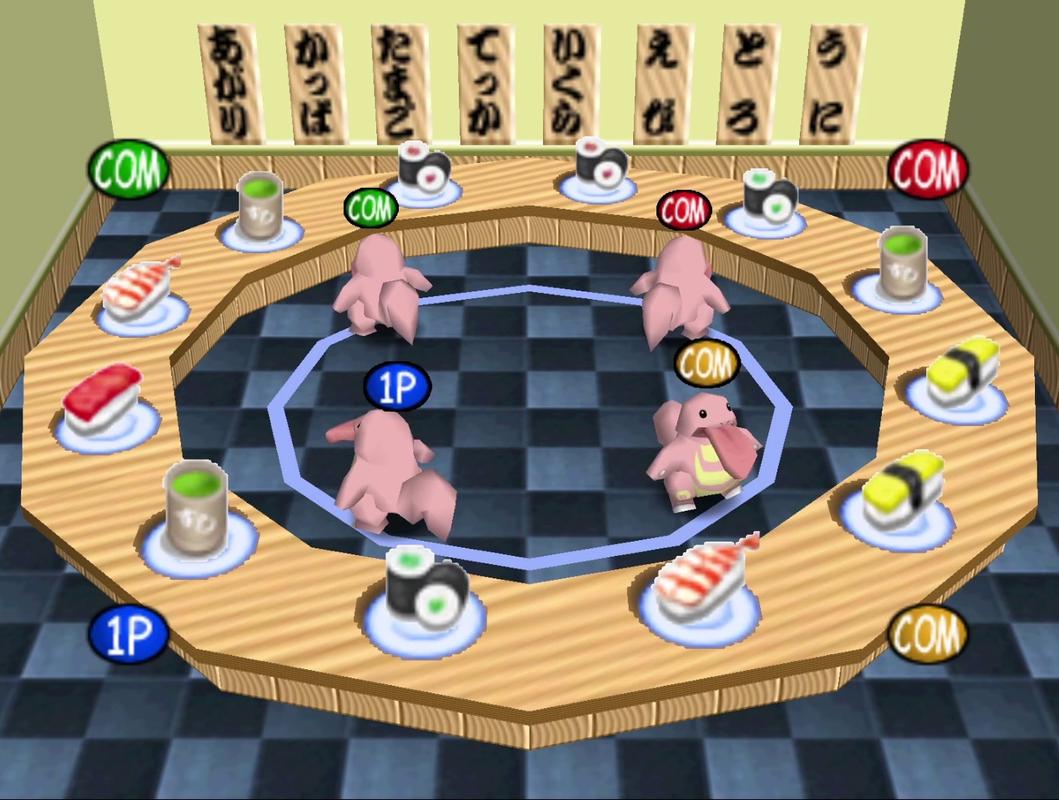 Connor has always been interested in sushi ever since he played the Lickitung minigame in Pokémon Stadium
Connor has always been interested in sushi ever since he played the Lickitung minigame in Pokémon Stadium
 Here is some he had while visiting Kyoto
Here is some he had while visiting Kyoto
You were lucky enough to travel to so many wonderful places during your trip. What were some of your favourites?
Connor:
From the moment I decided I’d live in Japan, I knew I wanted to be in Osaka (Goldenrod City). My Japanese professor in university grew up there and she loved telling us about it. It’s the food capital of Japan, and the rabid fandom of the historic Hanshin Tigers baseball team was the inspiration for Casey in the Johto anime. People in Osaka are generally friendlier and more laid-back compared to Tokyo, and I recommend potential travelers spend as much time in that area as possible. The combination of Osaka, Kyoto, Kobe, and Nara are better than anywhere else you’ll find in the country, in my opinion.
What were some of the greatest challenges you faced during your trip?
Connor:
The biggest obstacle to producing this video was working five days a week as an English teacher. My off-days were Thursday and Friday, and it rains a lot in Japan. Sometimes I’d have a full day of exploration planned only to have it ruined by the weather. That’s why there’s a month-long gap between Nagoya (Cherrygrove City) and Nara (Violet City). The weather only got less cooperative as time went on, because even when it wasn’t raining, the heat and humidity of Japanese summer also took a major toll on me.
Teaching children is extremely exhausting, both physically and emotionally. Five days of that busy schedule, one or two days of travel, with basic housework and recovery whenever possible. This daily grind demanded everything I had, all with the goal of visiting every location before climbing Mt. Fuji during summer vacation in August.
My teaching salary was so low that the Osaka municipal government gave me and my foreign co-workers a one-time 100,000 yen stimulus check, about $700. I spent almost all of my savings completing this project, since my salary couldn’t cover it. That 100,000 yen was the only reason I could go out and enjoy the remaining months I spent in Japan after finishing the project.
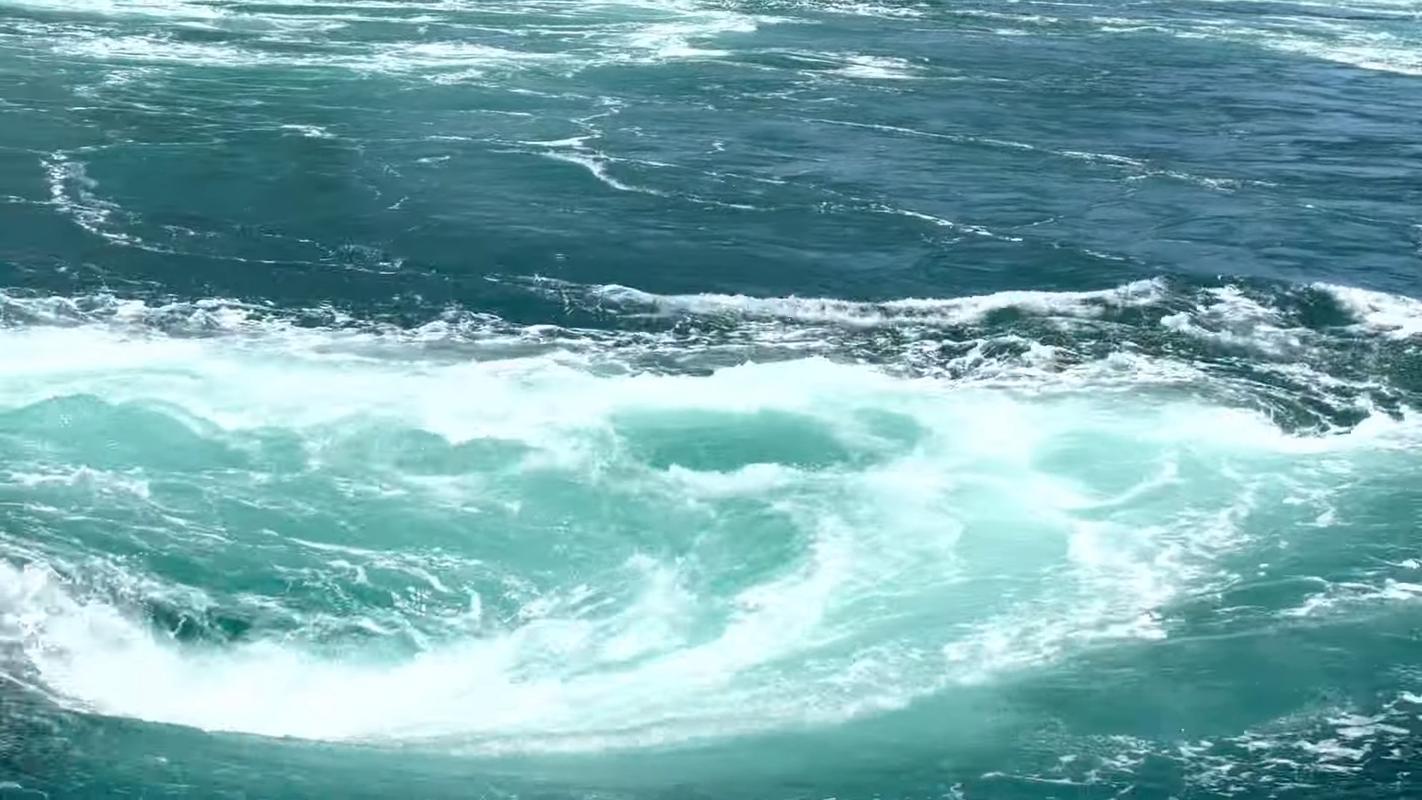 Awajishima, the real-world location of the Whirl Islands in Johto. The whirlpools in this region are very cool!
Awajishima, the real-world location of the Whirl Islands in Johto. The whirlpools in this region are very cool!
Navigating Japan on a budget and in a limited timeframe must have hindered you from exploring some environments. Which places do you wish you had had the chance to visit in more detail?
Connor:
The local bus schedule in Awajishima (Whirl Islands) is very limited, so I didn’t get the chance to visit the island’s monkey center. I’m a big fan of Aipom’s design, so I thought it would be a fun location to tie into the video. I ended up finding a wild Squirtle instead. I wanted to spot as many “Pokémon” as possible, connecting the common creatures you’d see around Japan to what appeared on my Game Boy screen all those years ago.
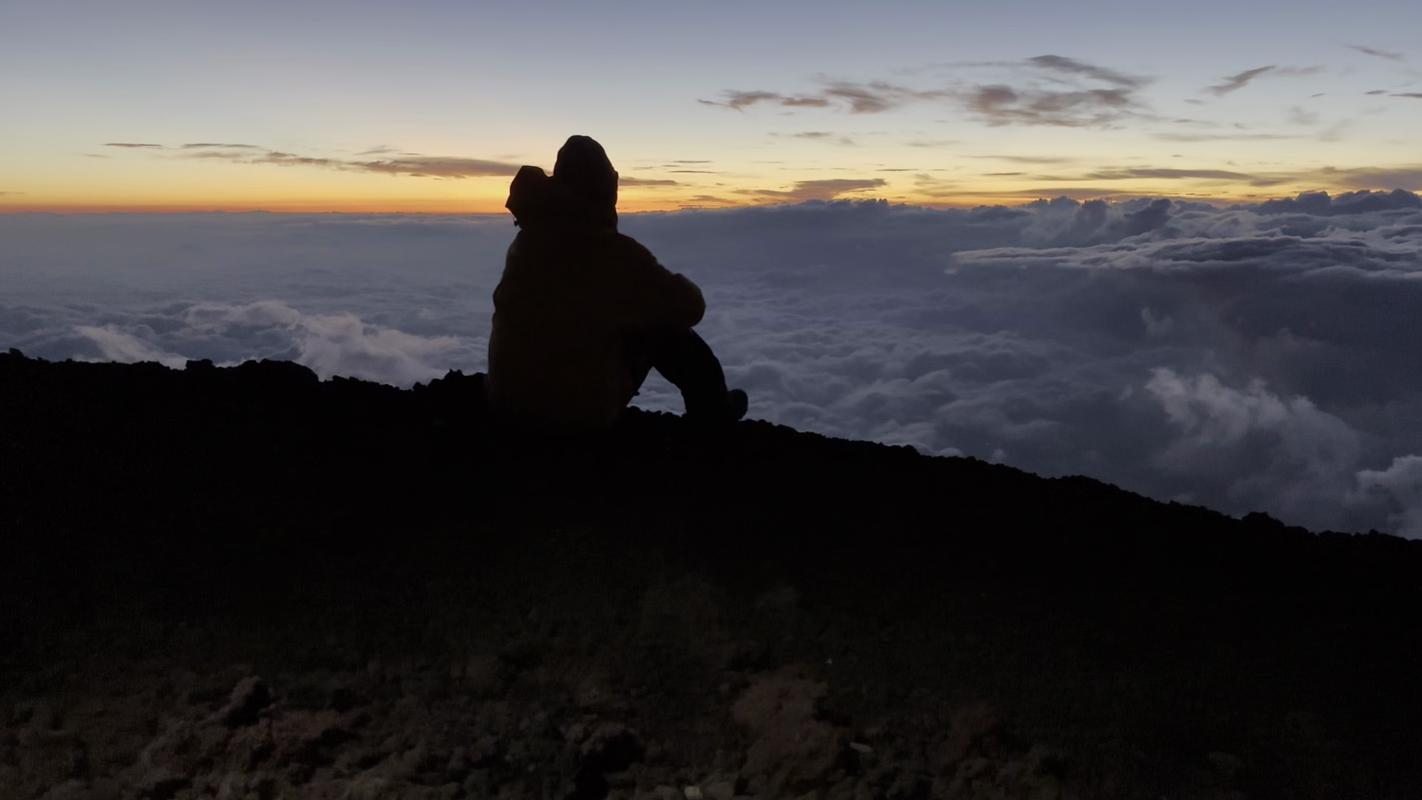 Connor on top of Mt. Fuji as the sun slowly begins to rise on the horizon
Connor on top of Mt. Fuji as the sun slowly begins to rise on the horizon
On August 7th, 2024, after achieving your goal of visiting the real-world equivalent of Johto, your final challenge was to climb Mt. Fuji as part of a group. How was that experience for you?
Connor:
It took some serious preparation, in terms of both hiking gear and physical fitness. I frequently run for exercise, and even though I can complete five or even ten kilometers at a decent pace, it still demanded every ounce of strength that I had.
There’s an incredible amount of visual variety to see as one ascends the mountain, and I had to balance my desire to capture interesting footage with my desire to not trip and fall on the jagged, rocky paths.
One aspect of the climb that I didn’t discuss in the video is the people I met on the way up. We had a cool group of expats and tourists from all over the English-speaking world, all coming together to take on this massive challenge. One of the older guys that did the climb used to work as an English teacher in Hong Kong. The only reason he got that job was because he lost his wallet and passport while on vacation decades ago and didn’t have the means to return home. He ended up marrying one of the staff members at his school, and that just became his new life.
I was focused on saving my breath in that low oxygen environment, but I’ll remember the different stories I heard forever, even if I’ll never meet any of them again.
I was super impressed by the amount of progress you made up Mt. Fuji, congratulations! After achieving your goal, and reflecting on your adventure, how do you feel?
Connor:
My journey to the top of Mt. Fuji did not begin the morning of August 7th, 2024. It started in March 2020, when we all had to stay inside to avoid getting sick. Since then, my life has consistently defied all conventional wisdom and I’ve done things I never could have dreamed. The only way to be the person I am now is to experience the unending challenges of these past five years. From charity streams, to South Korea, then Japan, I am grateful every day that I am alive to direct this saga. As incredible as it's been, I know that there are even higher peaks I’ll reach some day. I’m excited to look back on my video and this interview and remember who I am right now.
If my confidence ever gets shaken, I can think back to this beautiful, turbulent period of my life and remember that I can do anything if I want it badly enough and take one step at a time.
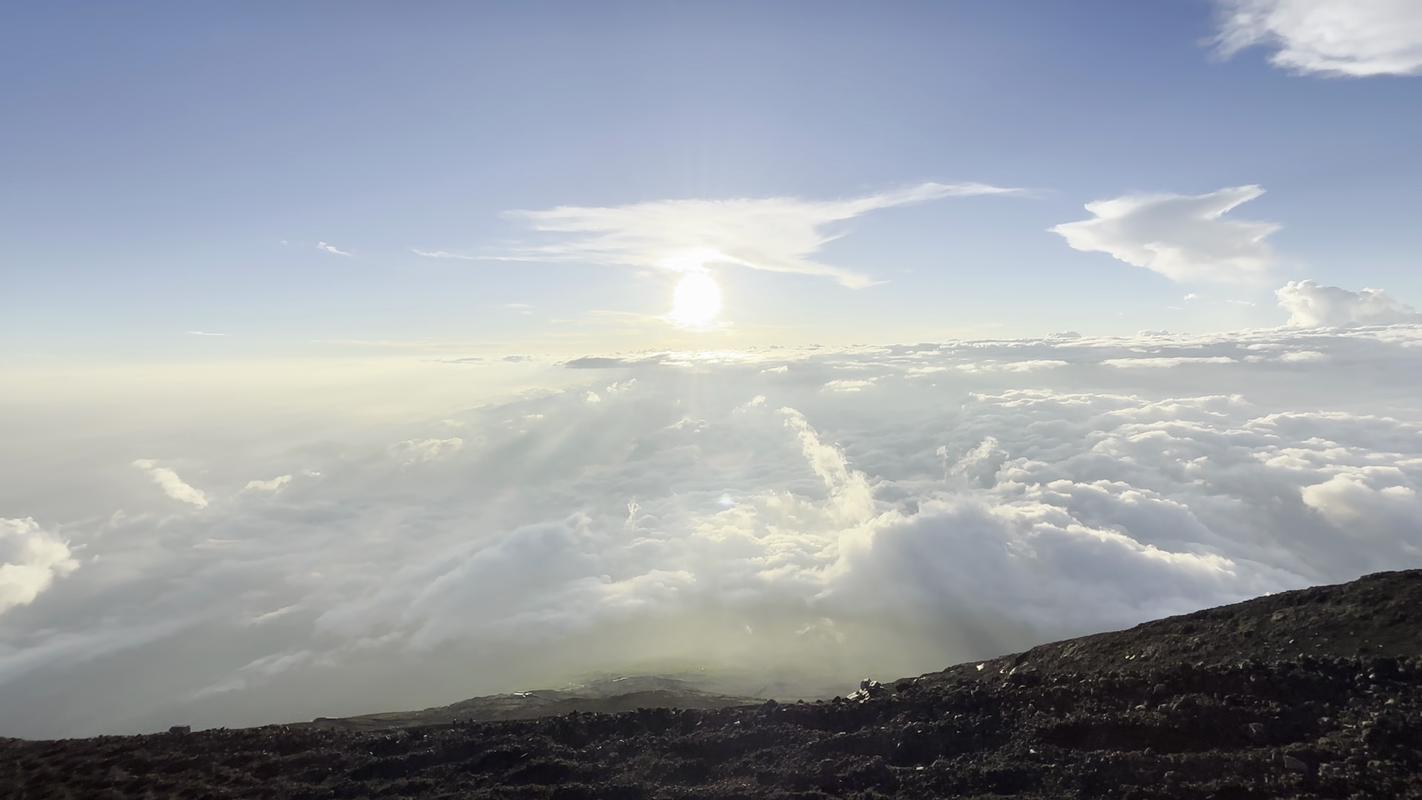 Another beautiful shot of Mt. Fuji, captured by Connor as he achieves his goal of climbing the real-world equivalent of Mt. Silver from Johto
Another beautiful shot of Mt. Fuji, captured by Connor as he achieves his goal of climbing the real-world equivalent of Mt. Silver from Johto
It’s quite possible that your adventure will inspire others to make their own! What advice do you have for people who may wish to make a similar trip?
Connor:
Teaching English internationally can be an excruciatingly difficult job, especially if you’re working for a business and not a school, but it is an accessible opportunity for most native speakers. All you need is a four-year degree and a health check.
If you’re lost in life and have always dreamed about moving to Japan, the experience will be worth it no matter how difficult it is. These companies will chew you up and spit you out, but nobody will be able to take away the life experience you’ll achieve. I wish I had known that this was a possibility when I finished university. I’m 28 now, which was a major factor in me coming back home after just one year each in South Korea and Japan. If I had started at 21, I think I would have stayed at least three years in Japan.
Pokémon must have meant so much to you as a child to encourage an adventure such as this! I am curious to hear what it was like for you growing up with it. What are some of your fondest memories?
Connor: I think what always interested me most was in-person events and tournaments. I started out watching the anime, collecting the cards, and playing Red Version. I constantly rewatched the three-episode Viz VHS tapes, so the opening guitar riff from this Ranma ½ trailer is forever burned into my brain.
Visiting the Pokémon Center in New York, or Toys “R” Us during an event distribution, was a bigger deal to me than Christmas morning. At the Pokémon Center, you could pop your cartridge into this big, futuristic-looking machine and download Celebi directly into your game. I waited hours to get the MYSTRY Mew; I’m sure my Dad would have liked to do something else with his Saturday, but the chance to talk, battle, and trade with other kids is something I still treasure. I’m grateful that I had parents willing to bring me to events; the online distributions we have today are more fair for everyone, but something is definitely lost without that in-person social experience. I’ve kept Mew and many other event Pokémon safe and transferred up throughout each generation.
I always wanted to talk to other high-level Pokémon fans, which eventually led me to sign up for the official Nintendo NSider forums. I often perceived my nerdier spaces – both online and IRL – as somewhere that you didn’t want to be behind the knowledge curve. Not only for your ability to win against other competitors, but to participate in group conversations as well. Pokémon has always been a space where I could step forward confidently as some[one] who’d done their research; I see the countless lessons it’s taught me about connection and ambition as something crucial to developing the adventurous person I’ve become today.
My favorite Pokémon is Oddish. I had the promotional plushie that Burger King distributed for the first movie, and I carried him around everywhere as a three-year-old. Most of my favorite designs come from the first two generations, with Lickitung, Porygon, Snorlax, Wooper, Umbreon, Scizor, Phanpy, and Smeargle as some of my personal picks. I chose Charmander in Red and Totodile in Silver.
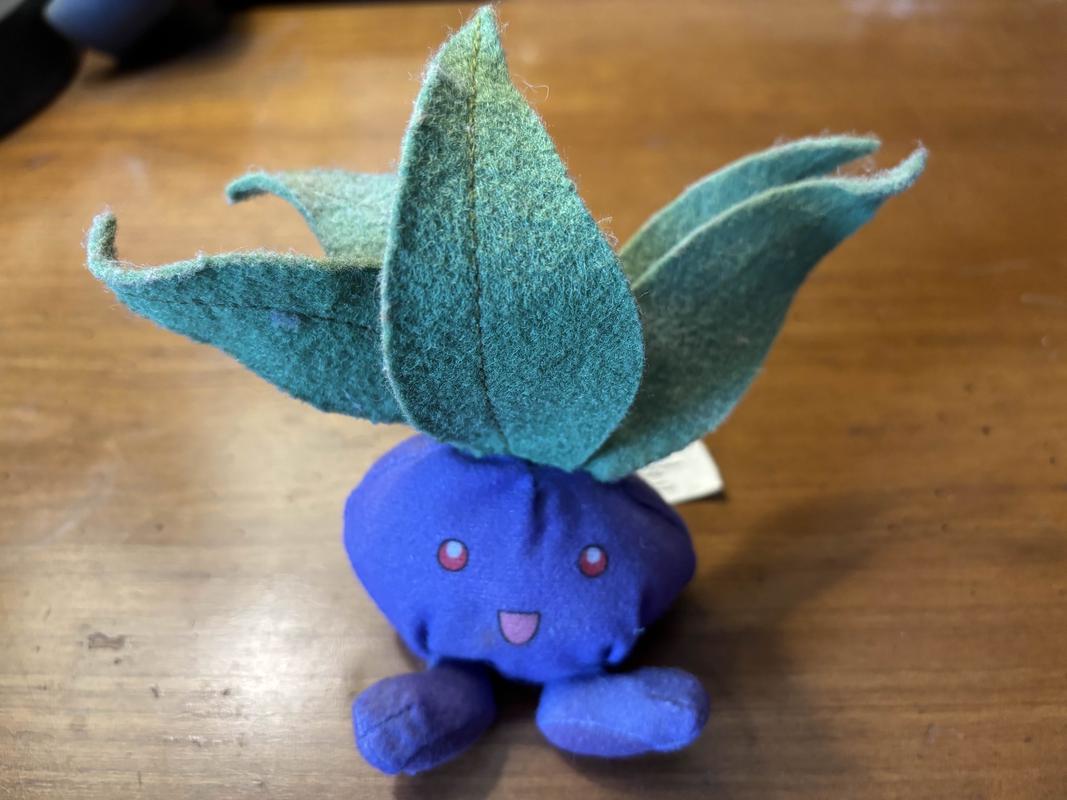 Connor’s Oddish plush he got from Burger King, which is now twenty-five years old
Connor’s Oddish plush he got from Burger King, which is now twenty-five years old
You are now back in the United States after your incredible trip through the real-world Johto. What happens next for you?
Connor:
Lately, I’ve been working odd jobs, like pet-sitting and tutoring Japanese. In my free time, I want to continue using my YouTube channel to challenge myself creatively. As a writer and audiovisual editor, I know I have so much room for improvement.
Similar to the video essay I made for my life in South Korea, I’d like to speak more personally about my experiences in Japan. Last November, I visited Ōkunoshima, also known as Rabbit Island. I’m working towards releasing a video about that, in my own bizarre way. The last shot of the Johto video is actually a teaser for that Rabbit Island video. I want to make something special for Pokémon’s 30th anniversary as well.
If I ever made another project like this, I’d like to explore either Hoenn (Kyushu, Japan) or Unova (New York).
Connor, it has been an inspiration watching your video and learning all about your huge adventure! I am very jealous, and I thank you for sharing it with us. Do you have any closing comments you would like to make?
Connor:
If you are possessed by a creative spirit, it will haunt you forever if you don’t manifest your ideas into the physical world. Accept that it won’t be perfect, and then get to work!
A huge thanks to Connor for taking the time to answer our questions and share his experiences with us. I hope his visit to Johto is one that he will treasure for the rest of his life.

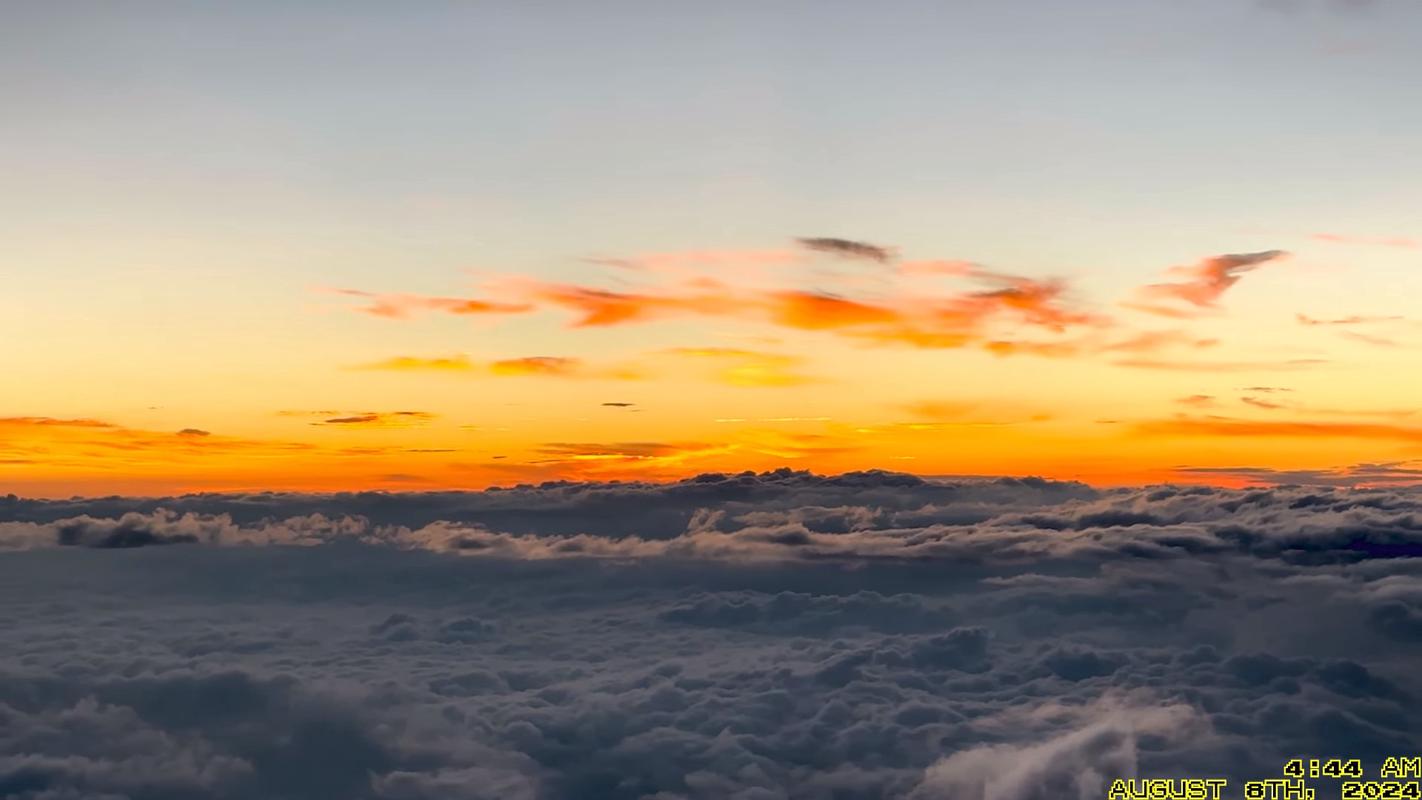
Comments
Loading comments...